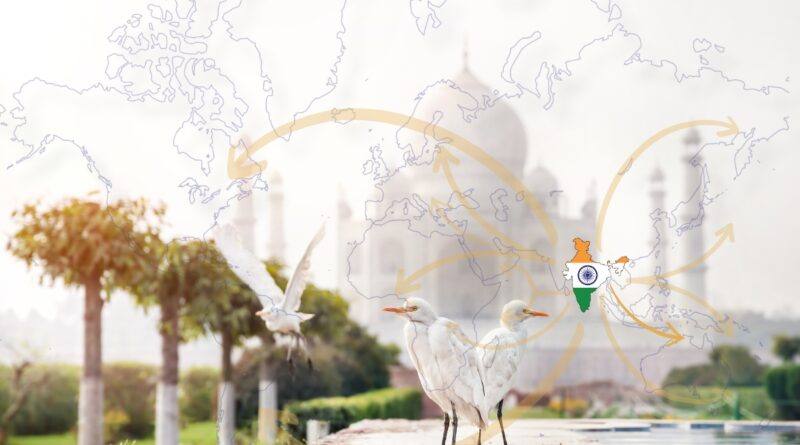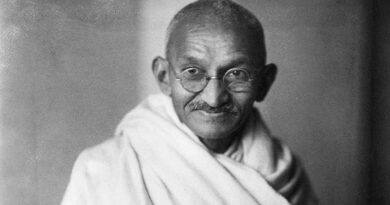The Great Indian Migration: The Birds That Flew To The Corners Of The World
The global diaspora of Indians has evolved over centuries and across continents, showcasing resilience, adaptability, and significant contributions to diverse fields globally. From the pioneering Indian traders who established trade routes in Southeast Asia, such as the Cholas, to the resilient indentured labourers who toiled on Caribbean sugarcane plantations, Indians have left an indelible mark on the global landscape. Today, the Indian diaspora is a vibrant and diverse community, contributing to the cultural, economic, and political landscape of countries around the globe. Let us look at the historical journeys, obstacles, and achievements of the Indian diaspora, emphasizing their resilience and ability to prosper amidst challenges.
Brief overview of the history of Indian migration
Indian migration has a long and complex history, with waves of emigration dating back centuries. From the early Indian traders who sailed across the Indian Ocean to establish trade links with Southeast Asia to the indentured labourers who were forcibly sent to work on sugarcane plantations in the Caribbean during the colonial era, Indians have travelled far and wide in search of opportunity and prosperity. Despite facing discrimination and hardship in their new homelands, the Indian diaspora has persevered and flourished, carving out successful careers and establishing vibrant communities in countries around the world. Today, the Indian diaspora continues to grow and evolve, playing a significant role in shaping the global landscape.
For instance, in addition to the Indian entrepreneurs thriving in Silicon Valley, notable successes include Indian-origin professionals excelling in diverse sectors like healthcare, academia, and the arts, enriching global industries. Additionally, the vibrant Indian community in the United Kingdom has made significant contributions to business, politics, and culture, enriching the fabric of British society. However, it is important to note that not all members of the Indian diaspora have experienced the same level of success. There are many who have faced discrimination and barriers to social and economic mobility, particularly in countries where they are a minority. For example, in Malaysia, some members of the Indian community have been marginalised and face challenges accessing education and employment opportunities.
Importance of exploring how Indians have evolved in different corners of the world
Understanding the evolution of the Indian diaspora in various regions is essential to grasp the multifaceted impact of their experiences on the global community, shedding light on their resilience, cultural richness, and collective contributions. By studying the achievements and contributions of the Indian diaspora, we can gain valuable insights into the resilience, adaptability, and ingenuity of this group of people. Their stories serve as a testament to the power of the human spirit and determination in overcoming adversity and thriving in new environments. As we continue to witness the growth and influence of the Indian Diaspora, it is crucial that we recognize and celebrate its unique cultural heritage and rich history.
A glimpse into the various facets of the Indian diaspora
From successful entrepreneurs to renowned artists, the Indian diaspora has made significant contributions in various fields around the world. Their ability to navigate different cultures and environments while maintaining a strong sense of identity is truly inspiring. As we look to the future, it is important to continue supporting and promoting the achievements of the Indian diaspora, as they play a vital role in shaping the global community and fostering greater understanding and unity among people of diverse backgrounds.
Early Indian Migration
Early Indian migration began in the 19th century, when British colonies like Fiji, South Africa, and Malaysia recruited Indian laborers to work on their plantations. Despite facing discrimination and hardships, these early migrants played a crucial role in shaping the economies of their host countries. Their struggles and perseverance laid the foundation for future generations of Indian immigrants to thrive and excel in various professions across the globe. Today, their legacy lives on through the achievements of the Indian diaspora, who continue to break barriers and make a positive impact on the world stage. For example, in Fiji, Indian laborers worked long hours under harsh conditions on sugar plantations, contributing significantly to the growth of the industry. Their descendants have since become successful entrepreneurs, politicians, and professionals, making valuable contributions to the country’s economy and society. The Indian community in Fiji has preserved its cultural heritage and traditions while also integrating with the wider Fijian society, showcasing the resilience and adaptability of the diaspora.
Historical context of Indian migration to Southeast Asia, Africa, and the Middle East
As an illustration, in Malaysia, Indian immigrants arrived as indentured labourers to cultivate rubber plantations under arduous conditions, defining their journey of resilience and perseverance amidst adversity. Many of their descendants have gone on to excel in various fields, including business, the arts, and politics. The Indian community in Malaysia continues to celebrate its rich cultural heritage through festivals and traditions while also actively participating in the country’s multicultural society.
The Indian diaspora has not only made significant contributions to their host countries but has also maintained strong cultural ties to their homeland. Through their hard work and determination, they have established themselves as successful entrepreneurs, professionals, and leaders in various industries. Their resilience and adaptability have allowed them to overcome challenges and create a lasting impact on the global stage. As we look back on the history of Indian migration, we can appreciate the sacrifices and achievements of those who paved the way for future generations to thrive in new lands.
Factors like the lure of trade routes, colonial policies, and labour demands have been pivotal in moulding the Indian diaspora and influencing its economic, social, and cultural trajectories across the globe.
Reasons for migration, such as trade, colonization, and labor opportunities, have played a significant role in shaping the Indian diaspora. The Indian migrants have not only contributed to the economic growth of their host countries but have also enriched the cultural tapestry with their traditions and customs. Despite facing discrimination and hardships, they have persevered and excelled in their chosen fields, leaving a legacy that continues to inspire others. The history of Indian migration bears witness to the strength and resilience of a community that has flourished despite numerous challenges.
For example, Indian migrants who moved to countries like the United States and the United Kingdom in search of better job opportunities have excelled in fields such as technology, medicine, and finance, contributing to the growth and innovation of these nations. Additionally, Indian traders who established businesses in Southeast Asia during colonial times have left a lasting cultural and economic influence in the region, showcasing the entrepreneurial spirit and resilience of the Indian diaspora.
Cultural influences and adaptations
The widespread popularity of Indian cuisine, exemplified by the global appeal of dishes like biryani and curry, along with the influence of Bollywood music and dance, underscores the significant cultural imprint of the Indian diaspora on a global scale. The blending of Indian traditions with local customs has created a unique fusion that has captivated people from all walks of life. This cultural exchange has not only helped to bridge gaps between different communities but has also fostered a greater understanding and appreciation of diversity. The Indian diaspora continues to make a lasting impact on the global stage, showcasing the power of unity and perseverance in the face of adversity.
Examples of these include the integration of Indian cuisine, fashion, and traditional practices, along with the establishment of temples, cultural associations, and Indian language schools. These cultural exchanges have enriched the local communities and fostered a sense of diversity and inclusivity in these regions.
Indian Diaspora in the Western World
The popularization of yoga and meditation practices, which are widely embraced and integrated into mainstream culture, is one specific example of the Indian diaspora’s impact in the Western world. Additionally, Indian Americans have excelled in various fields such as technology, medicine, and entrepreneurship, contributing significantly to the economic and social fabric of their adopted countries. However, the success of Indian Americans in these fields does not negate the challenges faced by other members of the diaspora, such as lower-income immigrants who struggle to find stable employment and face discrimination in Western societies. Furthermore, the popularisation of yoga and meditation practices can sometimes lead to cultural appropriation and commodification, detracting them from their spiritual origins and significance.
Overview of Indian migration to North America, Europe, and Australia
In North America, for instance, Indian communities have enriched the cultural tapestry through vibrant festivals like Diwali and Holi, showcasing the diversity and traditions of India to a global audience. In North America, Indian immigrants have excelled in various fields such as technology, medicine, and entrepreneurship, making significant contributions to the economy and society. In Europe, Indian communities have established themselves as vibrant contributors to the arts, academia, and business sectors. Similarly, in Australia, the Indian diaspora has played a vital role in shaping the multicultural fabric of the country, bringing their rich traditions and customs to the forefront. Overall, the Indian diaspora in the Western world continues to thrive and make a positive impact on their adopted countries.
Factors contributing to the growth of the Indian diaspora in these regions, such as education and employment opportunities, as well as political stability and immigration policies, have allowed for the Indian community to flourish and prosper. This has led to an increase in Indian immigrants moving to these regions in search of better opportunities and a higher quality of life. With their strong work ethic and entrepreneurial spirit, Indians have been able to integrate successfully into Western societies and make significant contributions in various sectors, further enhancing the diversity and cultural richness of their adopted homes. The Indian diaspora’s success in the Western world serves as a testament to the resilience and determination of this vibrant community.
Cultural preservation and integration in Western societies
Despite facing challenges such as discrimination and cultural barriers, Indian immigrants have managed to preserve their rich cultural heritage while also integrating into Western societies. Through community centres, religious institutions, and cultural events, they have been able to maintain their traditions and values while also embracing the customs and practices of their new home. This dual identity has not only enriched the cultural landscape of Western societies but has also fostered greater understanding and appreciation for the diverse tapestry of humanity. As a result, the Indian diaspora continues to thrive and contribute to the social, economic, and cultural fabric of their adopted countries.
While the Indian diaspora may have contributed positively to diversity and cultural exchange, it is important to recognise that there can also be challenges and tensions that arise from differences in values, beliefs, and practices between the diaspora and local communities. Additionally, not all members of the Indian diaspora may have equal opportunities or access to resources in the Western world, leading to potential disparities and marginalisation within these communities.
Evolution of Indian Identity
One example of the positive contribution of the Indian diaspora to their adopted countries is in the field of technology, with many Indian immigrants playing key roles in Silicon Valley and driving innovation. However, tensions can arise when traditional Indian cultural practices clash with Western values, such as gender roles or religious beliefs, leading to discrimination or misunderstandings within the diaspora community. A detailed counterexample to the positive contribution of the Indian diaspora in technology can be seen in instances where Indian immigrants face discrimination and barriers to advancement in their careers due to their ethnicity. Additionally, conflicts within the diaspora community may arise when individuals from different regions of India have differing cultural practices and beliefs, leading to divisions and a lack of unity within the community.
The shift from traditional to modern values in the diaspora community can also lead to generational conflicts, as younger members may embrace Western ideals while older generations hold onto traditional customs. This can create tension and a sense of disconnection within the community, making it difficult to maintain a cohesive identity. Overall, while the Indian diaspora has made significant contributions in various fields, there are challenges and complexities that can hinder the unity and progress of the community. It is important for individuals within the diaspora to work towards understanding and respecting each other’s differences in order to foster a stronger and more inclusive community.
Challenges faced by second and third-generation Indians in maintaining cultural ties include the pressure to assimilate into the dominant culture while also trying to preserve their heritage. Many struggle to balance their Indian identity with their Western upbringing, leading to a sense of identity crisis. Additionally, language barriers and lack of exposure to Indian traditions and customs can further alienate younger generations from their roots. Despite these challenges, efforts to educate and celebrate Indian culture within the diaspora can help bridge the gap between generations and create a more cohesive community.
The emergence of a global Indian identity has become increasingly important as the Indian diaspora continues to grow and spread across the world.Through events, festivals, and community organisations, individuals are able to connect with their heritage and form a sense of belonging within the larger Indian community. This sense of unity and pride in their cultural background can help individuals navigate the complexities of being a part of multiple worlds, ultimately leading to a stronger and more resilient global Indian identity.
While the Indian diaspora may have contributed positively to diversity and cultural exchange, it is important to acknowledge that not all members of the diaspora may face challenges or tensions in their adopted countries. Additionally, many individuals within the Indian diaspora have successfully integrated into Western societies and have equal opportunities and access to resources.
Economic Impact of Indian Diaspora
For example, a second-generation Indian-American who has a strong understanding of both Indian and American cultures may be able to leverage their background to form international business partnerships and navigate global markets effectively. On the other hand, a member of the Indian diaspora in a Western country may face discrimination or barriers to employment despite being highly qualified, highlighting the importance of acknowledging and addressing systemic challenges within adopted countries. However, it is also possible for a second-generation Indian-American to face discrimination in the business world due to stereotypes or biases against their ethnicity, hindering their ability to form partnerships or advance in their career. Additionally, a member of the Indian diaspora in a Western country may not necessarily face barriers to employment if they are able to network effectively and showcase their skills and qualifications, demonstrating that individual effort and determination can sometimes overcome systemic challenges.
Contribution of Indian diaspora to the economies of host countries
The Indian diaspora often brings valuable skills and expertise to their host countries, contributing to economic growth and innovation. Their entrepreneurial spirit and work ethic have led to the creation of successful businesses and the generation of employment opportunities. By overcoming barriers and showcasing their talents, members of the Indian diaspora have played a significant role in shaping the economies of their host countries and fostering cross-cultural exchange.
Entrepreneurship and innovation among Indian expatriates have not only benefitted the host countries’ economies but have also strengthened diplomatic and trade relations between India and their adopted nations. The success stories of Indian entrepreneurs abroad have inspired others in the diaspora to pursue their own business ventures, further fuelling economic growth and diversification. Through their hard work and determination, Indian expatriates have proven themselves to be valuable assets to their host countries, driving progress and prosperity in a globalised world.
Role of the Indian diaspora in shaping global industries
Their contributions have not gone unnoticed, as Indian expatriates are now sought after for their unique skills and expertise in various industries. As pioneers in technology, healthcare, finance, and more, they continue to break barriers and make significant impacts on the world stage. The Indian diaspora’s influence in shaping global industries is undeniable, showcasing the power of diversity, innovation, and collaboration in driving forward the global economy.
- The economic impact of the Indian diaspora on both their home country and adopted countries, including contributions to various industries and sectors. For example, Indian expatriates in the technology sector have played a crucial role in advancing artificial intelligence, coding, and software development, leading to groundbreaking innovations and advancements in technology worldwide.
- Challenges faced by some members of the Indian diaspora in terms of discrimination, cultural identity conflicts, or struggles with integration into Western societies. For instance, Indian immigrants may face barriers in accessing employment opportunities or encounter racism in their host countries. Despite these challenges, many members of the Indian diaspora have successfully navigated them and made significant contributions to their respective communities and industries.
- Success stories and examples of individuals within the Indian diaspora who have excelled in their careers, businesses, or communities in their adopted countries. One example is Indra Nooyi, who immigrated to the United States from India and became the CEO of PepsiCo, leading the company to enormous success. Another example is Sundar Pichai, who moved from India to the US and rose to become the CEO of Google, revolutionising the tech industry with his leadership and innovation.
- Cultural exchange and diversity initiatives led by the Indian diaspora that promote understanding and appreciation for Indian culture within Western societies. For example, the Indian American Cultural Association in the US organises events and festivals to showcase Indian traditions, music, and cuisine, fostering cross-cultural dialogue and appreciation. Additionally, the Australia India Youth Dialogue brings together young leaders from both countries to exchange ideas and foster mutual understanding, promoting diversity and cooperation between their societies.
- The role of education and professional networks within the Indian diaspora community in supporting its members’ personal growth, career development, and overall well-being. For example, the South Asian Bar Association provides mentoring, networking opportunities, and access to resources for Indian American legal professionals, helping them advance in their careers and make meaningful contributions to the legal field. Similarly, the Global Organisation of People of Indian Origin offers educational scholarships, leadership training, and career guidance to young Indian professionals around the world, enabling them to excel in their respective fields and connect with like-minded individuals for personal and professional development.
While it is true that some members of the Indian diaspora may face challenges in their adopted countries, it is important to recognise that many have achieved success and integration. Additionally, focusing solely on the challenges faced by some individuals overlooks the positive economic impact that the Indian diaspora has had globally.
The Indian diaspora has come a long way since the days of indentured labourers and is now a thriving community that contributes significantly to various industries worldwide. By acknowledging the achievements and successes of the diaspora, we can gain a more balanced perspective on their impact. Moving forward, it is crucial to continue supporting and empowering young Indian professionals to reach their full potential and further strengthen the global Indian community.
Reflection on the impact and significance of Indian communities around the world
It is also important to recognise the cultural and social impact that Indian communities have had in their host countries, enriching the diversity and vibrancy of their societies. The success stories of Indian entrepreneurs, artists, and professionals serve as inspiration for future generations, showcasing the potential and talent within the diaspora. By fostering connections and collaborations between Indian communities worldwide, we can create a powerful network that promotes mutual understanding, cooperation, and collective progress. The evolution of Indian migration and diaspora continues to shape the global landscape, demonstrating the resilience, creativity, and innovation of the Indian community.
Call to celebrate and honour the diversity of the Indian diaspora
It is important to recognise and celebrate the diversity of the Indian diaspora, as each individual brings a unique perspective and set of skills to the table. By honouring the contributions of all members of the community, we can create a more inclusive and supportive environment for future generations to thrive. Let us come together to celebrate the rich tapestry of cultures, traditions, and achievements that make up the Indian diaspora and continue to build a brighter future for all.
While celebrating diversity is important, focusing solely on the Indian community may inadvertently exclude other marginalised groups and perpetuate a hierarchy of importance based on ethnicity. It is essential to promote inclusivity and celebrate diversity across all communities, not just one specific group.
Indians have flourished in their respective societies, making significant contributions. By embracing and valuing diversity in all its forms, we can create a more inclusive and equitable world for everyone. Let us work towards a future where all individuals feel seen, heard, and respected, regardless of their background or heritage. Together, we can build a more harmonious and united global community that celebrates the unique contributions of every culture and individual.





Your writing has a way of resonating with me on a deep level. I appreciate the honesty and authenticity you bring to every post. Thank you for sharing your journey with us.